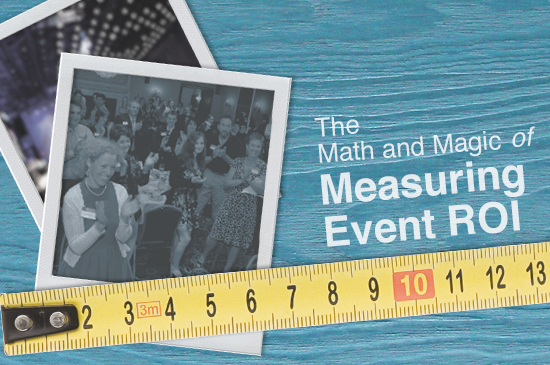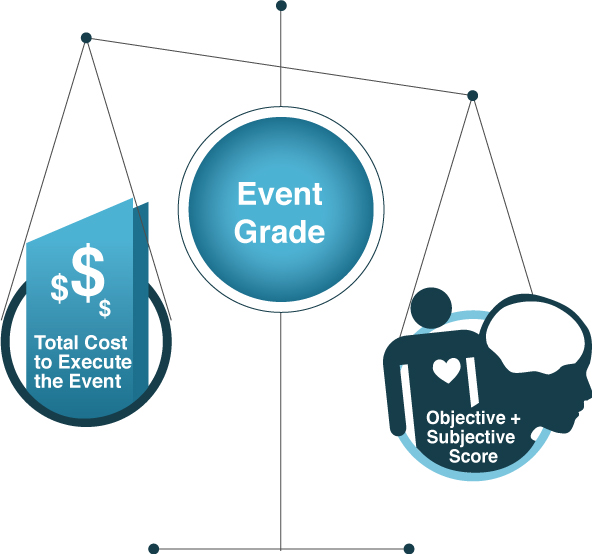Skift Take
If you can measure it, you can make event ROI better
This is a sponsored post written by Jen Hawkins, Marketing Director at DoubleDutch. More information about Event Manager Blog’s sponsored posts.

As the head of marketing for a technology company in the event industry, you wouldn’t be surprised to know that I believe in the power of events. In fact, I think events are the most powerful marketing channel there is. However, the impact of this channel has historically been the hardest to measure.
So we built an event ROI model that takes into account all that goes into producing and sponsoring events, and all that comes out. We participated in 80 total events in 2014 (that’s 1.5 a week!), so having an ROI model to measure event effectiveness is crucial to get the most bang for our buck. Here’s how our model works:
Start by Assessing the TOCE
The first step was to calculate the total cost to execute an event (we call it TOCE for fun). We know how much the venue costs or the booth sponsorship, so we’ve got that covered.
But one thing we often forget to include is the time and opportunity cost. To do this, we start by segmenting our events based on the level of effort and time required.

If you are producing the event — Does this event require lots of time and preparation from your team or can you just show up? If you are sponsoring — Will you be a platinum sponsor of a massive industry event, or just have a pull-up banner in a tiny expo hall? Once you have taken these factors into account, you can calculate the TOCE.
Then, Add the Impact (Part Math, Part Magic)
Part of this is easy math, since there are objective, quantifiable elements, like revenue generated, new customers acquired, deals won, etc. These elements are combined to produce an objective score.
But as we all know events (and marketing in general) is an art… and that’s where the magic comes in. Things like brand recognition, networking, improving customer relationships are valuable parts of events, but harder to measure.
We start with a list of hard-to-measure factors that impact event effectiveness, then assign values to them based on how important they are. For DoubleDutch, these subjective elements include (1) if we power the app at the event, (2) if our booth presence has a “WOW” factor, (3) if we have a high-profile speaking opportunity, and more. The subjective elements are combined to produce a subjective score.
Use the Measurement Model to Make Decisions

We take the TOCE (total cost to execute) and combine it with the objective score and the subjective score to determine an event ROI “grade” of A,B, C or D. Based on an event’s grade, we can compare how impactful one particular event was compared to another. If the event has an A or B grade, chances are it’s a good idea to continue investing in the event going forward. But if it receives a C or D grade, it might be time to reevalute or at least come up with an action plan for improvement.
Considering time lapse is important in this, so bear that in mind. Sometimes an event will initially receive a C or D, but then as time passes and more business comes in, you may see the grade bump up.
If the final grade is a C or D, then there are two routes we might take. We might decide that attending or sponsoring a specific event is simply not a valuable use of our time or money, or we might make adjustments to improve its grade. Maybe the TOCE was too high, so we can decrease spend; or perhaps we didn’t invest enough to make a substantive impact. We could try a larger or smaller booth or a more conducive venue.
In Conclusion: If You Measure It, You Can Make It Better
At DoubleDutch, we believe that technology can generate important data that helps marketers make smarter investment decisions. Every tap, bookmark, and survey response provides valuable information that can inform this ROI model. Was it worth flying your CEO out to speak at a particular event? See how many people bookmarked and rated the session to find out. Was springing for the super pricey venue a good idea? Check responses to the venue in the app, and you will know.
This model has impacted my marketing budget and the decision-making process of my events team. Feel free to use our template to create your own model.
My parting words – If you measure it, you can make it better.





